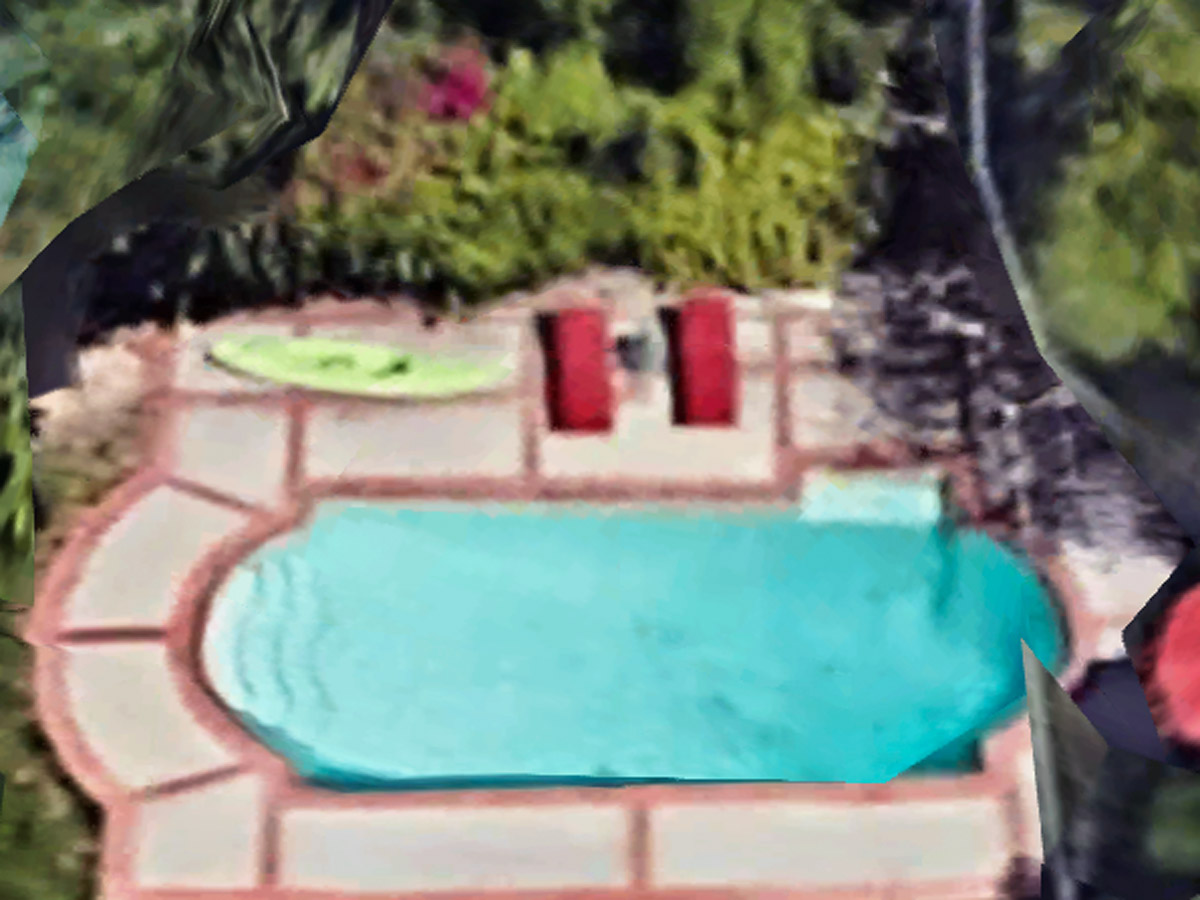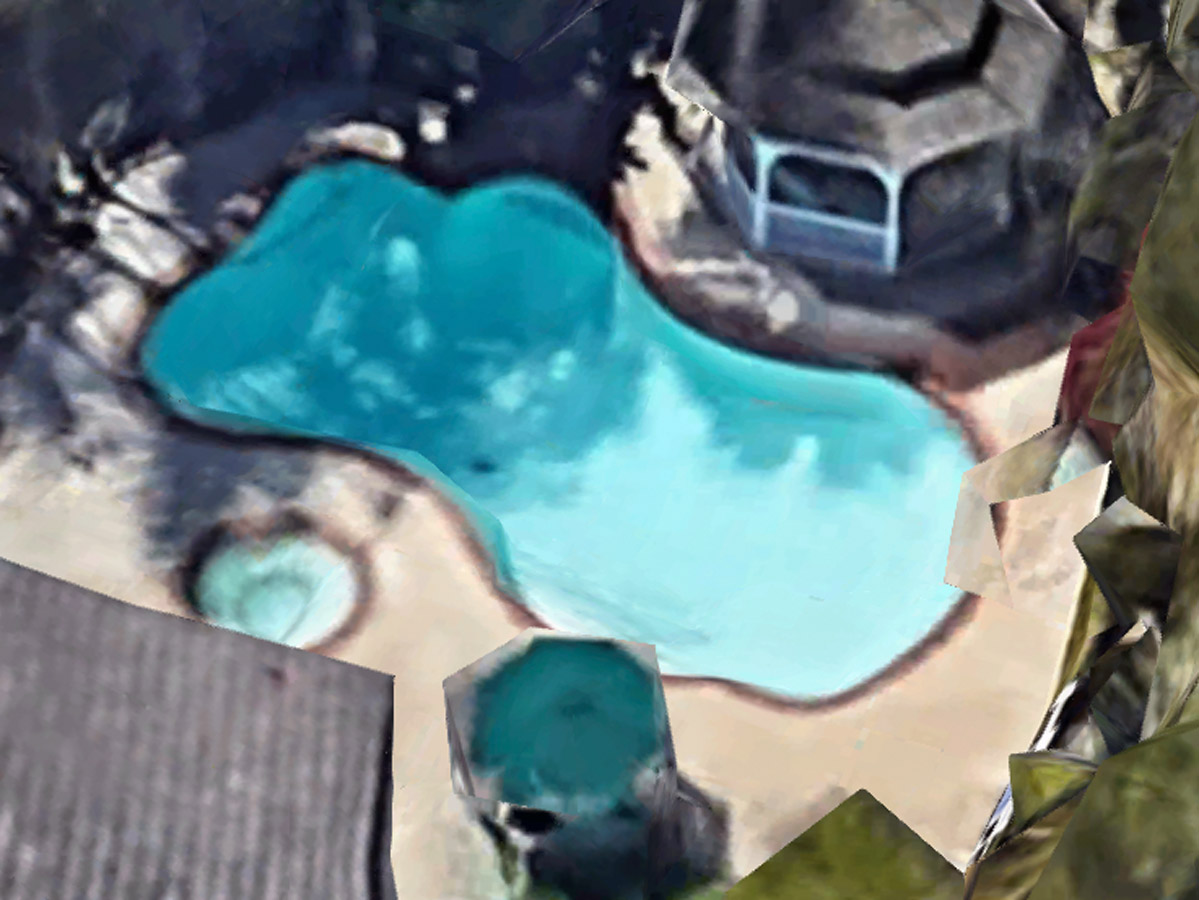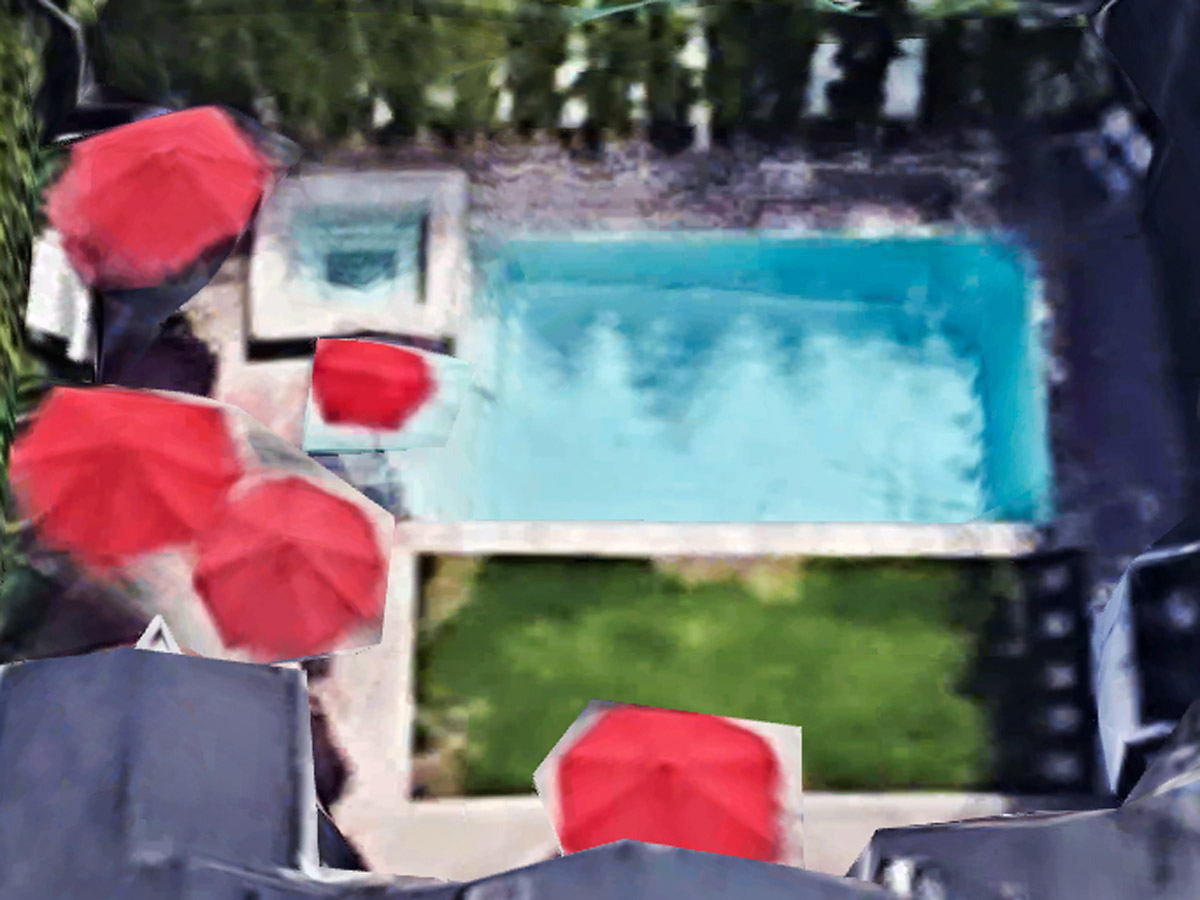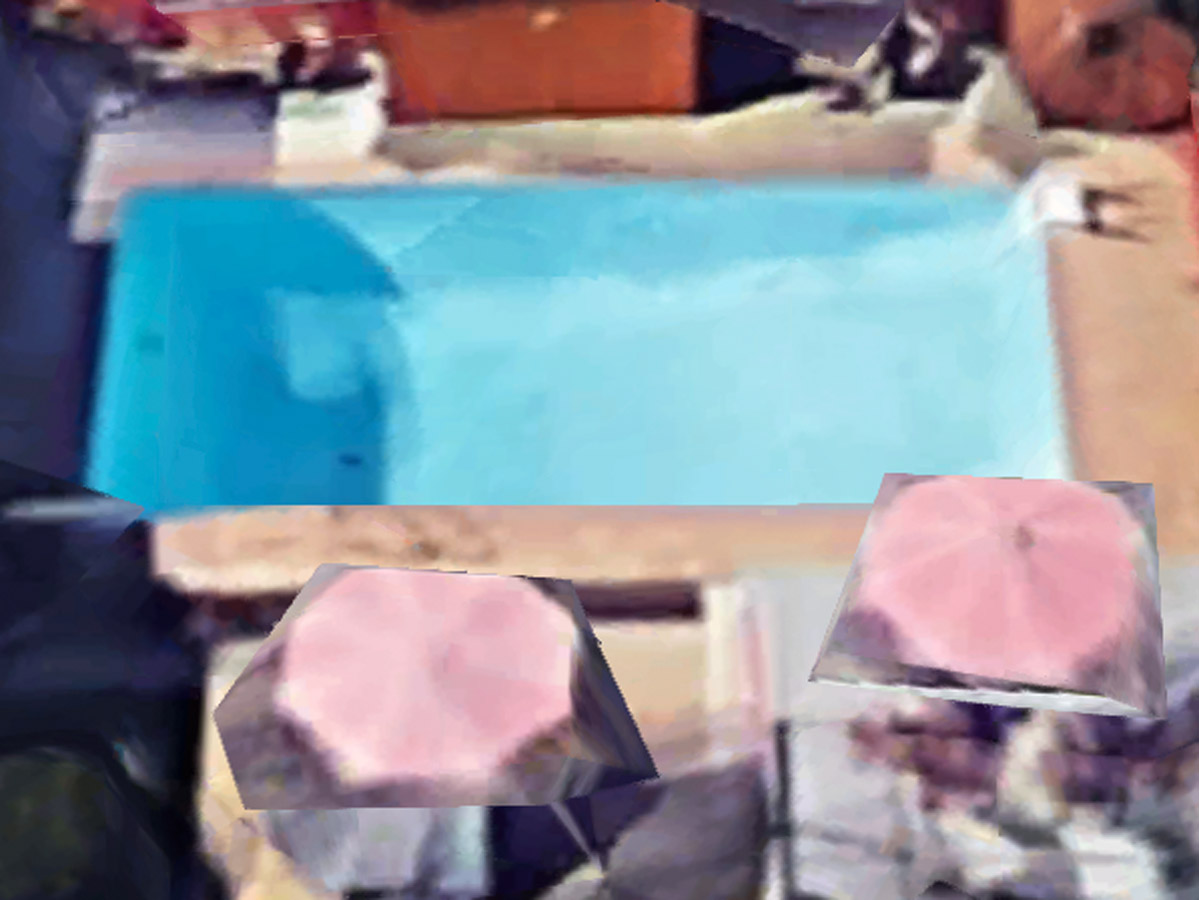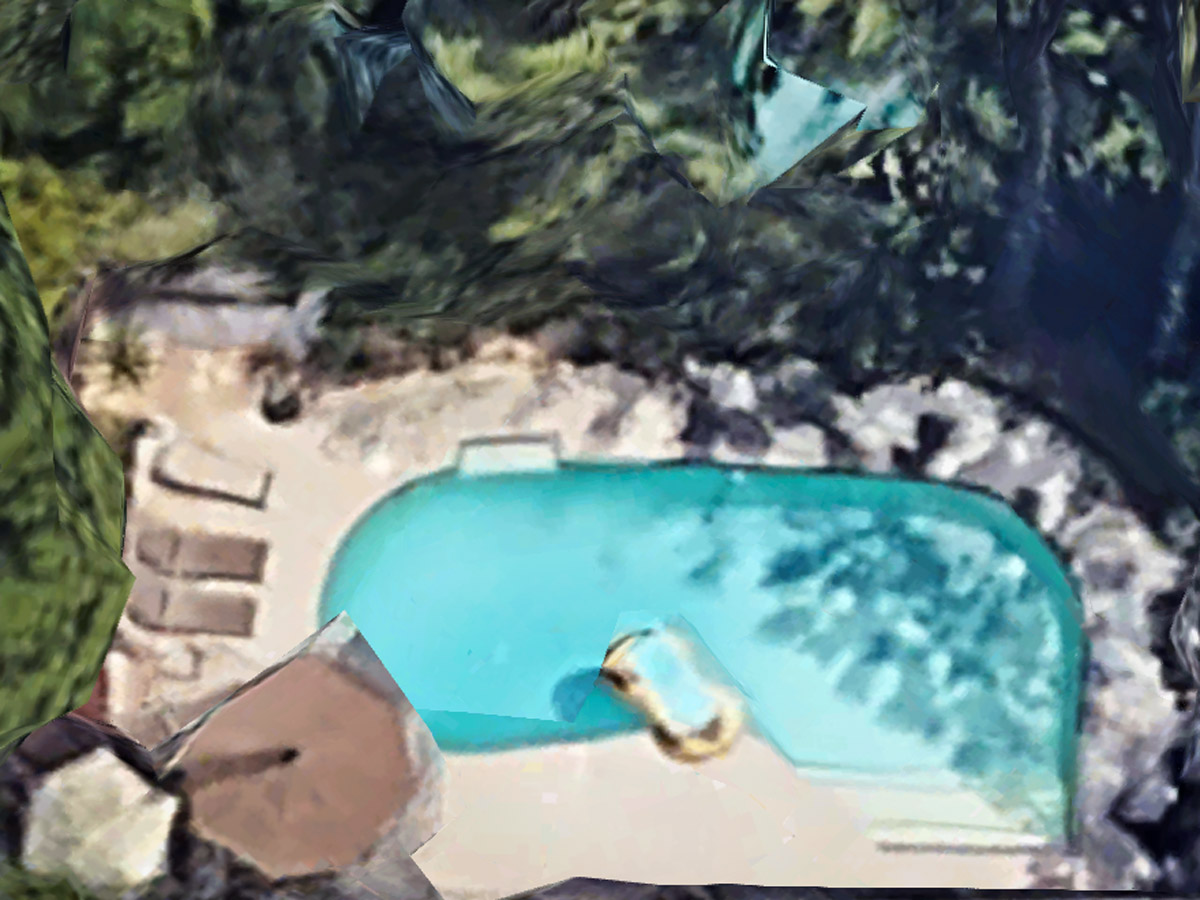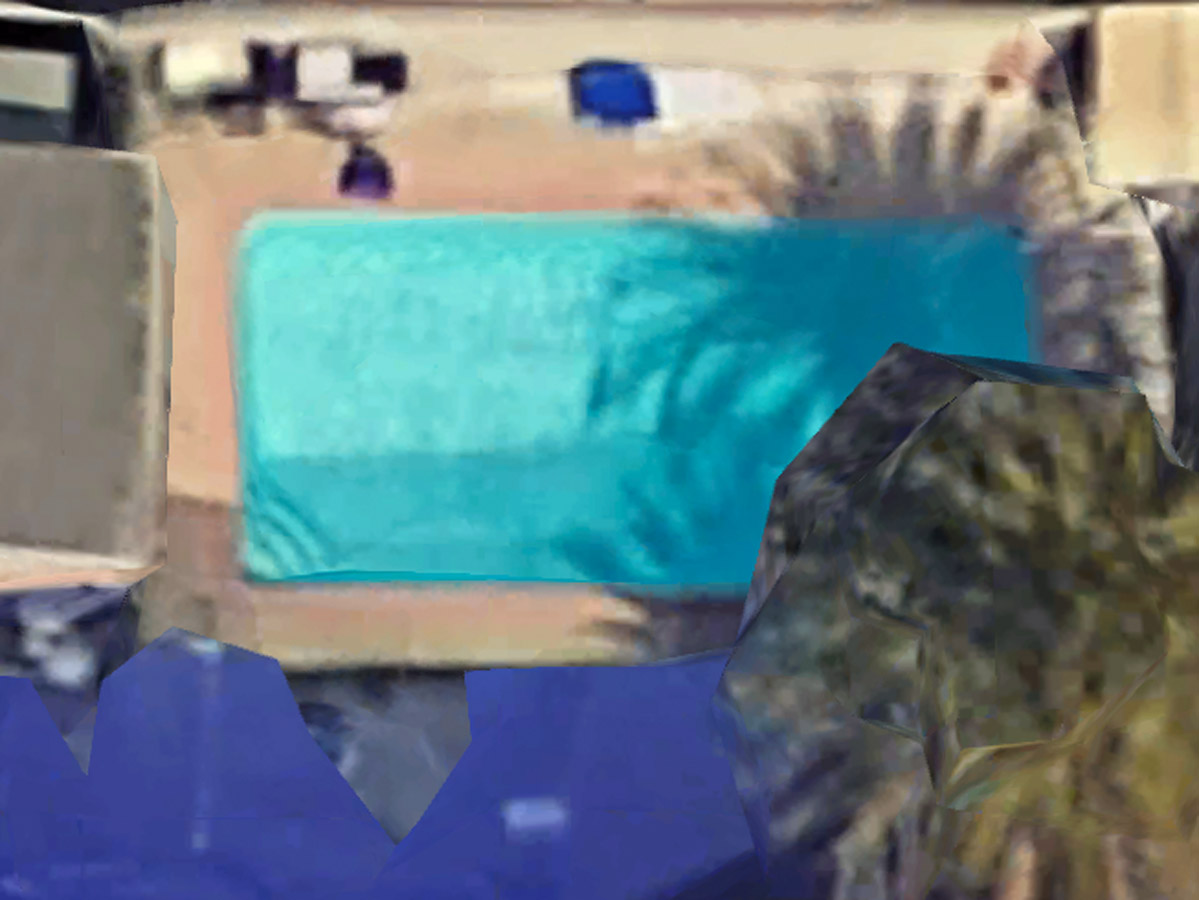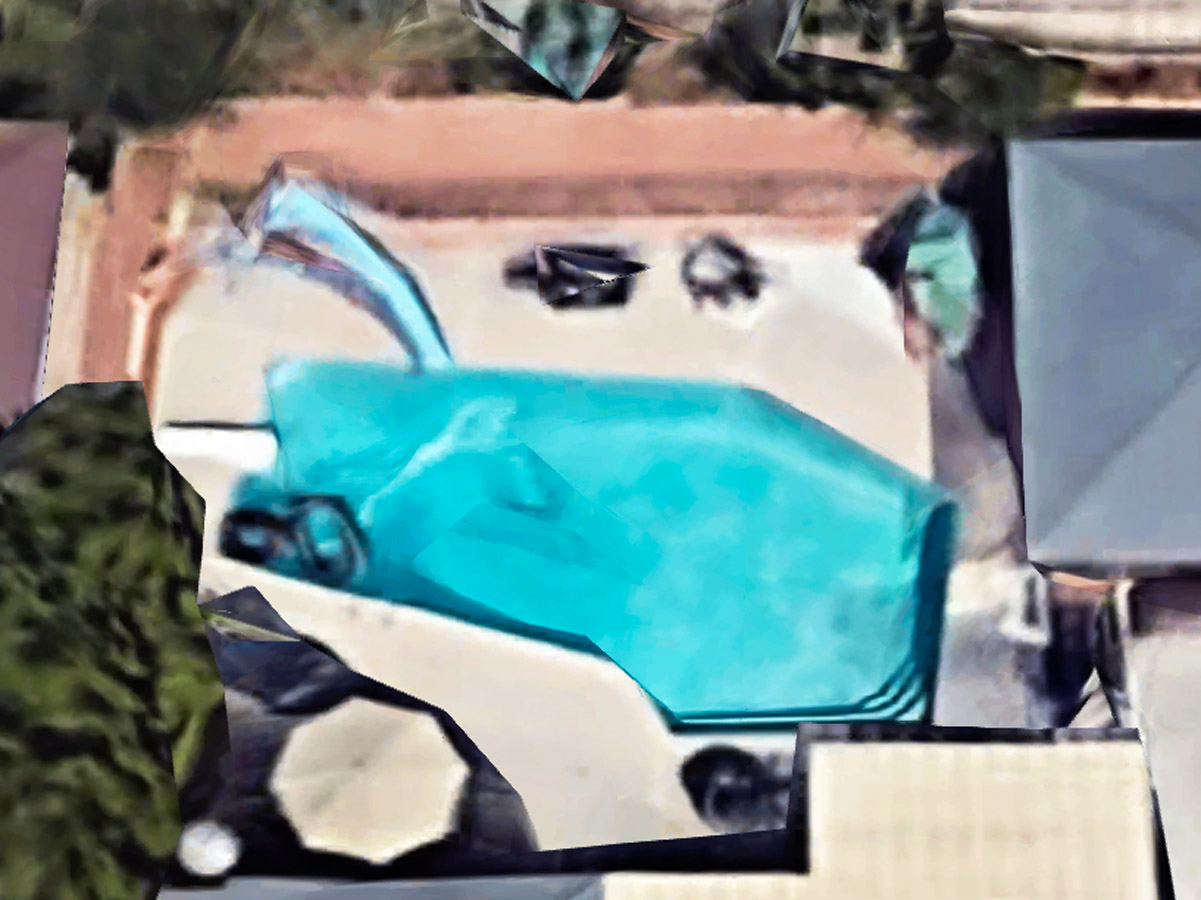IN TWENTYNINE Swimming Pools and a Thirsty Cow, the swimming pool is portrayed as the suburban symbol of status it became through the advent of the Hollywood movies in the 1950s. Since then, venue and context have changed, but still, the swimming pool signifies prosperity, fame, and freedom. The series is based on Ed Ruscha’s photo book, Nine Swimming Pools and a Broken Glass from 1968.
Half a century later, at a time when droughts and floods are increasing in numbers, the work intends to highlight the ever more important role of water consumption. The surveilling eye of Google has made it possible to peek over rooftops and hedges in seemingly deserted neighbourhoods. Here, the swimming pools, often hidden from prying neighbours’ eyes by fences or dense hedgerows, are clearly visible as glittering symbols of material success.
The addition of “a thirsty cow” interrupts the sequence and gives the viewer opportunity to contemplate water consumption for different purposes and the balance between the ‘good life’ and its price tag.
TEOKSESSA uima-allas näyttäytyy esikaupunkien statussymbolina, jollainen siitä tuli Hollywood-elokuvien esiinnousun aikaan 1950-luvulla. Vaikka ympäristö ja konteksti ovat muuttuneet, yhdistyy uima-allas edelleenkin mielikuviin vauraudesta, maineesta ja vapaudesta. Kuvasarja pohjautuu Ed Ruschan valokuvateokseen Nine Swimming Pools and a Broken Glass vuodelta 1968.
Nyt puoli vuosisataa myöhemmin, kuivuuden ja tulvien jatkuvasti lisääntyessä, keskitän huomioni yhä merkittävämmäksi muuttuneeseen vedenkulutukseen. Googlen valvovan silmän avulla olen kurkistellut näennäisen aution naapuruston kattojen ja aitojen ylitse. Näin paljastuvat naapurien katseilta usein aidoilla ja pensaikoilla piilotetut uima-altaat – kimmeltävinä aineellisen menestyksen merkkeinä.
Viittaus ”janoiseen lehmään” muistuttaa veden erilaisista käyttötarpeista sekä tasapainosta hyvän elämän ja siitä maksettavan hinnan kanssa.
